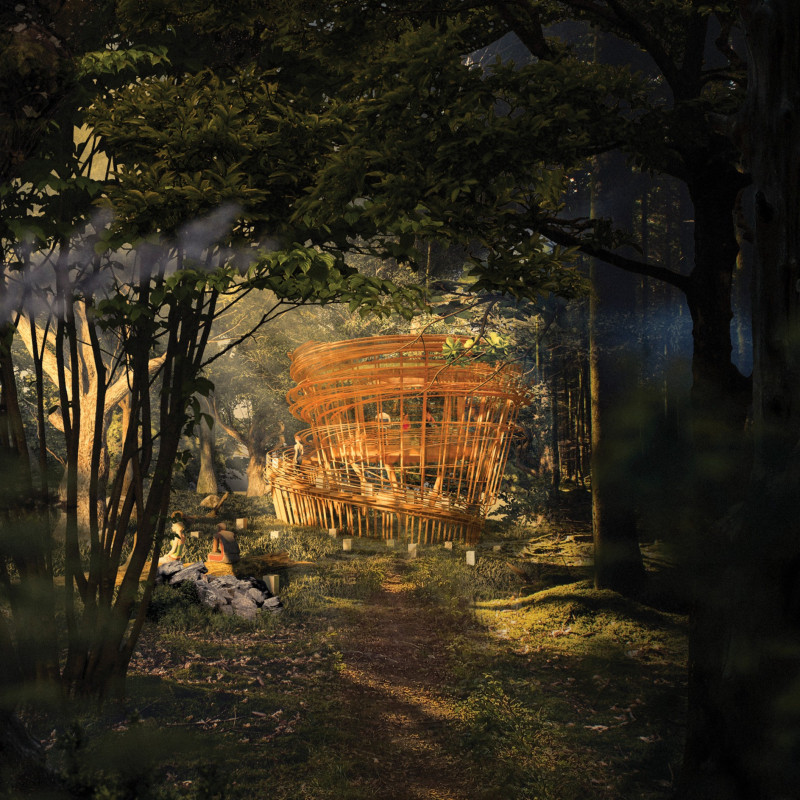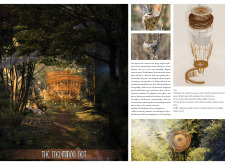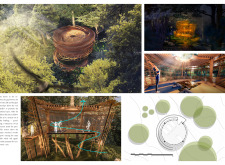5 key facts about this project
The Meditation Nest is located in the wild forests of New Zealand and serves as a space for introspection and meditation. The design takes inspiration from the shape and function of a bird nest, creating an environment that fosters a connection between users and the surrounding nature. It focuses on safety and immersion, enveloping individuals in a nurturing space that encourages personal growth and self-discovery.
Concept and Design Intent
The architecture aims to provide an elevated sanctuary. The structure has a nest-like form, offering protection while enhancing the user experience through panoramic views of the surrounding landscape. This elevation allows occupants to feel a part of the natural environment, deepening their engagement with the forests.
Environmental Integration
The design shows careful consideration for its environmental impact. By prioritizing an elevated structure, The Meditation Nest reduces the excavation needed for construction. This approach highlights a commitment to protecting the ecological integrity of the site. Building with respect for the land allows the structure to coexist with its surroundings.
Natural Ventilation and Airflow
Innovative strategies for natural ventilation are a key aspect of the design. Gaps between the wooden slab and glass envelope promote cool airflow without the need for mechanical systems. Openings in the roof allow hot air to escape, maintaining a fresh air supply within the space. This attention to natural ventilation improves comfort while aligning the internal environment with the external climate.
Materials and Aesthetic Integration
Material choices play an important role in this design, highlighting the use of local resources that reflect the nearby environment. Specific materials are not extensively detailed, but the emphasis on locally sourced elements emphasizes sustainability. The overall aesthetic is simple and connects with the forms in nature, integrating well with the forest landscape.
Design features create a calm atmosphere, enhanced by undulating lines that guide the eye toward expansive views. An opening in the roof invites natural light into the space, fostering a serene ambiance that encourages quiet reflection and engagement with the surroundings.



















































